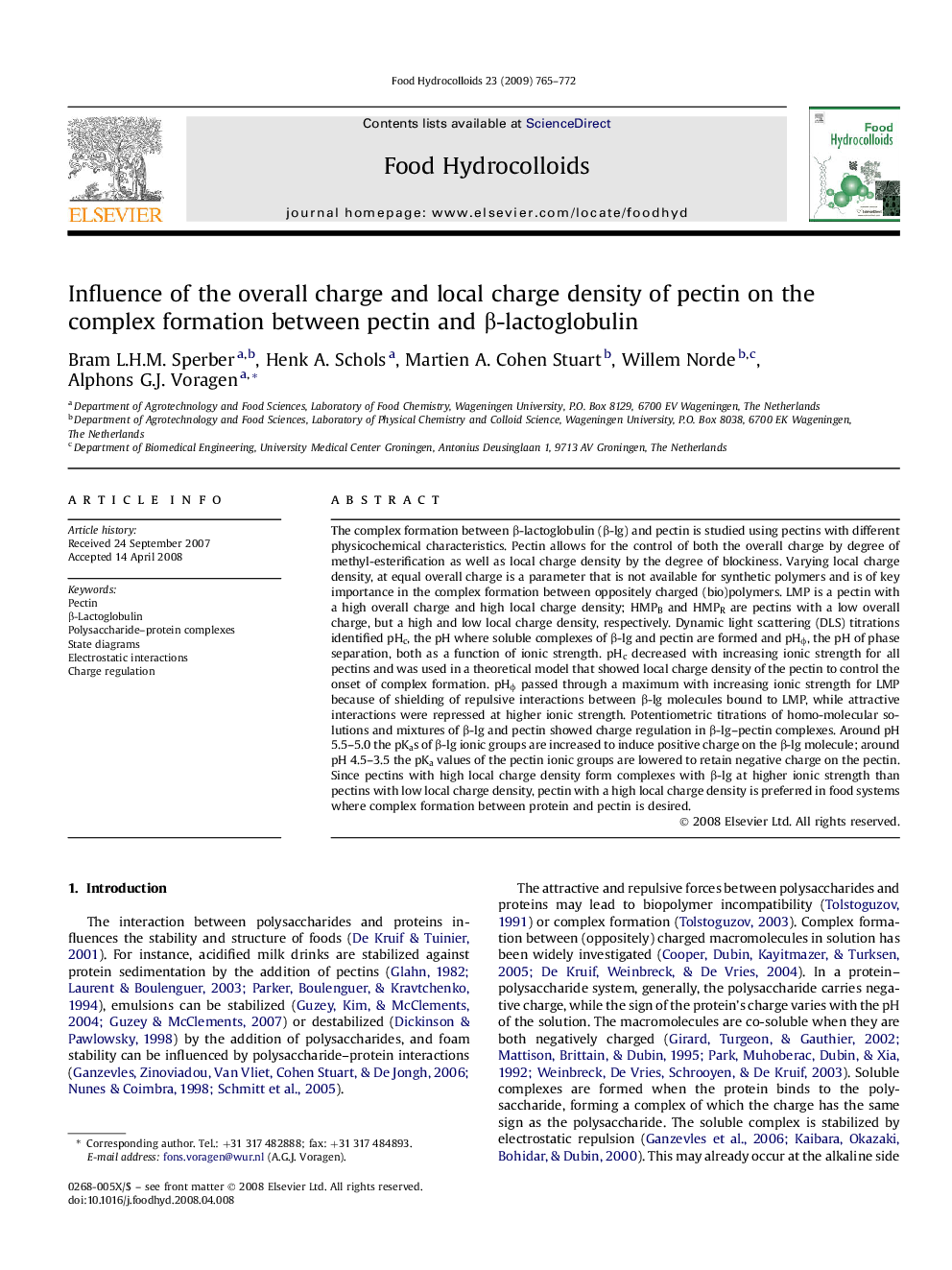| Article ID | Journal | Published Year | Pages | File Type |
|---|---|---|---|---|
| 605370 | Food Hydrocolloids | 2009 | 8 Pages |
The complex formation between β-lactoglobulin (β-lg) and pectin is studied using pectins with different physicochemical characteristics. Pectin allows for the control of both the overall charge by degree of methyl-esterification as well as local charge density by the degree of blockiness. Varying local charge density, at equal overall charge is a parameter that is not available for synthetic polymers and is of key importance in the complex formation between oppositely charged (bio)polymers. LMP is a pectin with a high overall charge and high local charge density; HMPB and HMPR are pectins with a low overall charge, but a high and low local charge density, respectively. Dynamic light scattering (DLS) titrations identified pHc, the pH where soluble complexes of β-lg and pectin are formed and pHϕ, the pH of phase separation, both as a function of ionic strength. pHc decreased with increasing ionic strength for all pectins and was used in a theoretical model that showed local charge density of the pectin to control the onset of complex formation. pHϕ passed through a maximum with increasing ionic strength for LMP because of shielding of repulsive interactions between β-lg molecules bound to LMP, while attractive interactions were repressed at higher ionic strength. Potentiometric titrations of homo-molecular solutions and mixtures of β-lg and pectin showed charge regulation in β-lg–pectin complexes. Around pH 5.5–5.0 the pKas of β-lg ionic groups are increased to induce positive charge on the β-lg molecule; around pH 4.5–3.5 the pKa values of the pectin ionic groups are lowered to retain negative charge on the pectin. Since pectins with high local charge density form complexes with β-lg at higher ionic strength than pectins with low local charge density, pectin with a high local charge density is preferred in food systems where complex formation between protein and pectin is desired.
